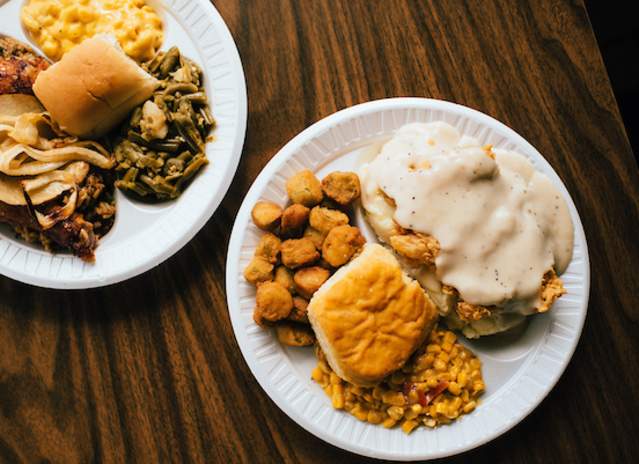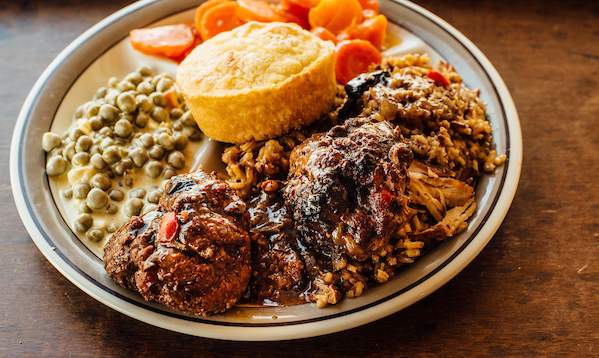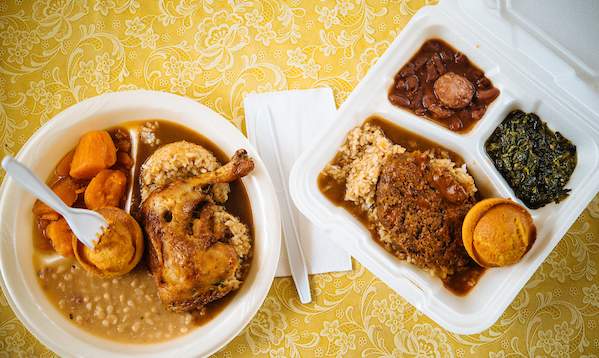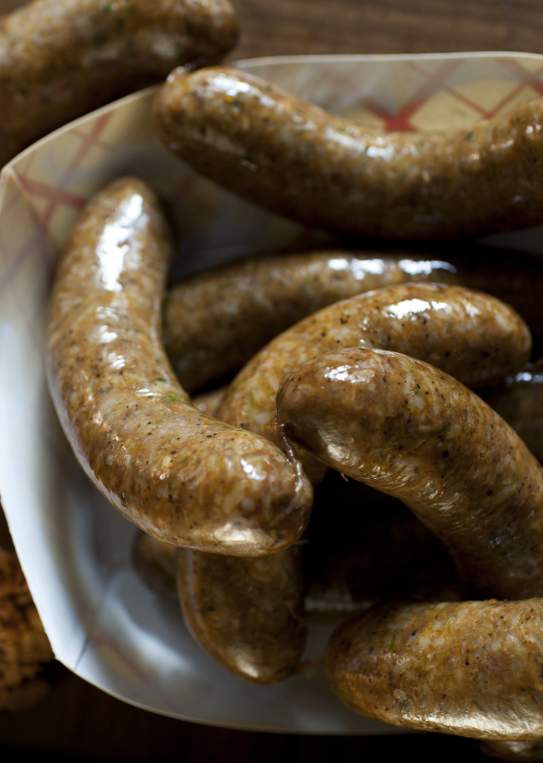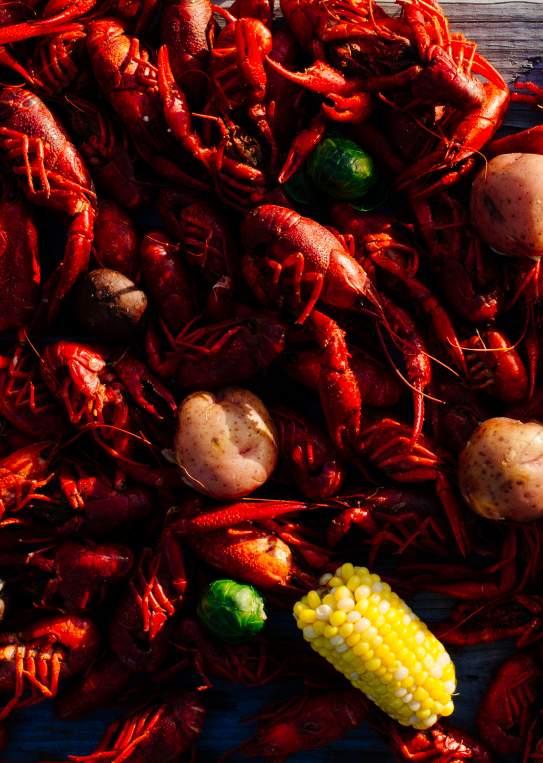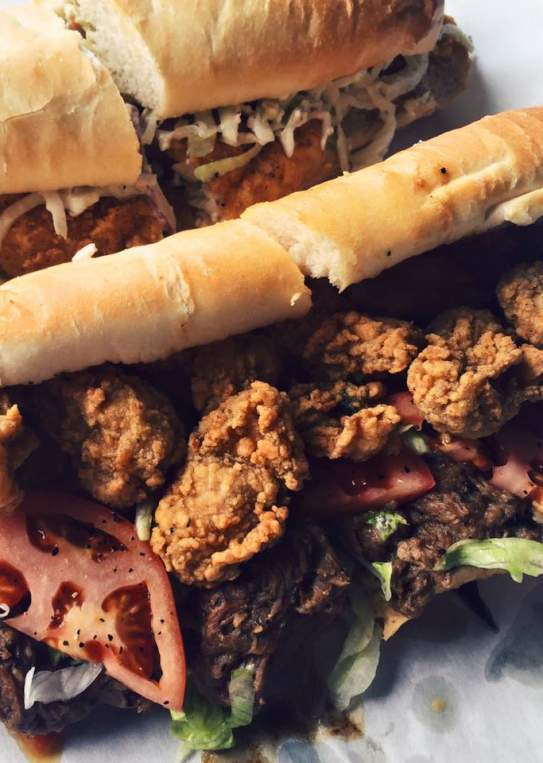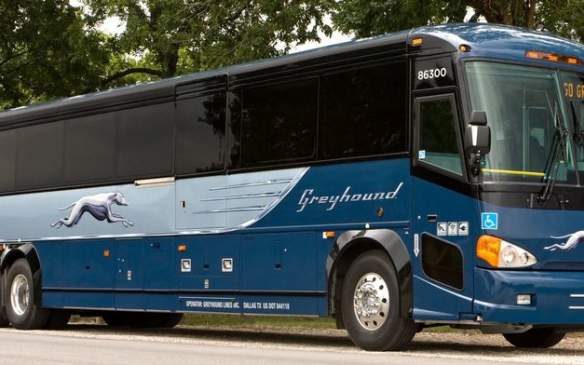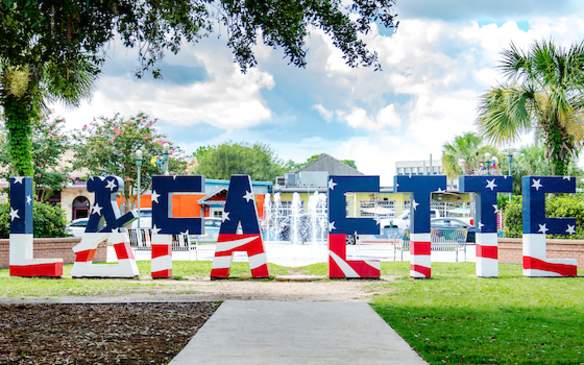Your browser is not supported for this experience.
We recommend using Chrome, Firefox, Edge, or Safari.
Plate Lunch Experience

Though most visitors to Lafayette, LA might sooner associate the area with our more famed Cajun and Creole culinary fare (jambalaya, crawfish, and gumbo), it is the rice and gravy-centric plate lunch that fuels the people of Louisiana’s Acadiana region. Consisting of meat, a gravy-covered starch, a pair of vegetable sides, and a simple piece of bread — and often all served on a single plate — the plate lunch emphasizes speed, affordability, and caloric heft.
A close cousin to the meat-and-three restaurants found throughout the South, the history of Lafayette, LA’s plate lunch houses is rooted in the marriage of rustic, homestyle cooking with the convenience offered by the buffet line. In the late nineteenth century, cafeteria-style lunchrooms appeared throughout America, introducing patrons to self-service, the steaming lunch counter, and the ubiquitous plastic tray.
In South Louisiana, rural meat markets were likely the first to sling portable plate lunches to a hungry working-class crowd. Instead of disposing of their scraps and other unsold cuts, butchers smothered these meats in a rich, roux-based gravy for tomorrow’s lunch. With the addition of rice — a regional commodity and staple of local tables — and a stewed vegetable or two, the plate lunch was born.
See below for a map and list of plate lunch restaurants in Lafayette Parish and beyond. Don't see one of your favorite plate lunch spots below? Click here and let us know so we can include them.
Discover the people and stories behind some of Lafayette's oldest plate lunch houses.
Over 50 stops throughout serving up traditional plate lunches.
Inspiration Journal
Lafayette's blog showcasing the food, music, culture and history at the heart of Cajun & Creole Country.
See All PostsBlu Basil
Dang Nguyen has one of those origin stories that makes you want to try his food. He's a Vietnamese American who owns and operates two Lafayette restaurants: Saigon Noodles on…
Burgersmith
In the olden days, when you wanted something handcrafted, you went straight to the source. Burgersmith, a play on the word blacksmith, takes the concept of handcrafted and applies…
Tsunami
At the beginning of this century, downtown Lafayette was anything but a thriving commercial market, and Sushi was anything but pervasive in Louisiana. However, sisters Michele…
Cafe Habana City
Living in Lafayette and the surrounding areas offers a thorough abundance of dining options. Many of the world’s cuisines are represented on the menus of our restaurants…
Getting to Lafayette
The city of Lafayette, LA is located in the center of Lafayette Parish at the intersection of I-10 and I-49 between New Orleans and Houston and only 35 miles north of the Gulf of Mexico.
